Berry, Berry Good! Posted by Gary Locke on Jun 15, 2017 in English Language, English Vocabulary
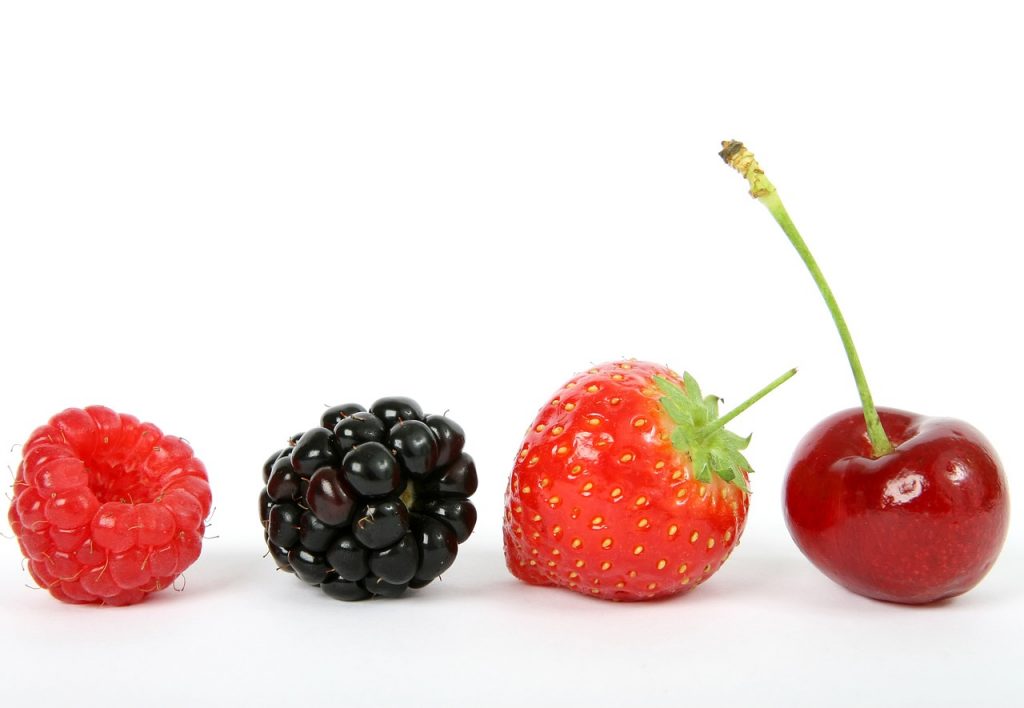
If you need a reason to celebrate summer, look no further than the four objects in this picture.
Last week I made a delicious and refreshing strawberry dessert and, as I hulled and sliced up the fruit, I began to wonder…Why do we call a strawberry a strawberry? This, in turn, led me to wonder about the etymology (or, word origin and development) of all my beloved summer fruit.
The Strawberry
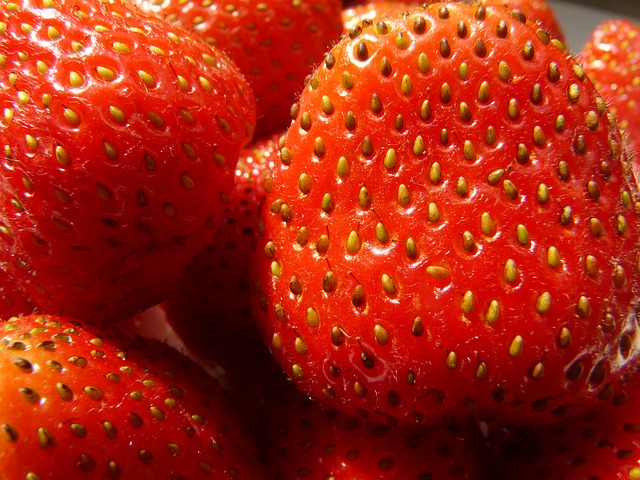
I won’t get too technical, but you should know that a strawberry isn’t really a berry. True berries have seeds on the inside, but the strawberry’s seeds are external. Those yellow things that dot the strawberry? Those are its seeds.
The common garden strawberry, as we know it, dates from around the mid-18th century and was first cultivated in Brittany, France. The existence of the wild strawberry, however, can be traced to at least ancient Rome, when it was used as a medicinal plant. Its popularity grew throughout the centuries, with its use extending well beyond the medicinal and into culinary circles. The popular dessert combination of strawberries and cream is said to have been created by (bless his heart) Thomas Woolsey, Henry VIII‘s Lord Chancellor and chief advisor in the mid-16th century.
Where does the name come from? As with many word origins, you have several theories to choose from. We know that pickers strung them on pieces of straw to prevent them from getting smashed as they were carrying them to market. Others believe that the outside surface of the fruit looks as if it’s embedded with bits of straw (the berries). Still others think that the name comes from the Old English word meaning to strew, because the plant’s vines look as if they are strewn on the ground.
The Cherry

A cherry is a stone fruit, like a peach or an apricot, and it grows on trees. The fruit has been enjoyed since prehistoric time, but probably made its way to Europe in the days of the ancient Greeks. This is also where the western world’s name for the fruit originated. The English word cherry derives from the French word for the fruit, cerise. Both words, however, are derived from the Latin name, cerasum, referring to Giresun, Turkey, where those first European cherry trees were planted.
The Raspberry
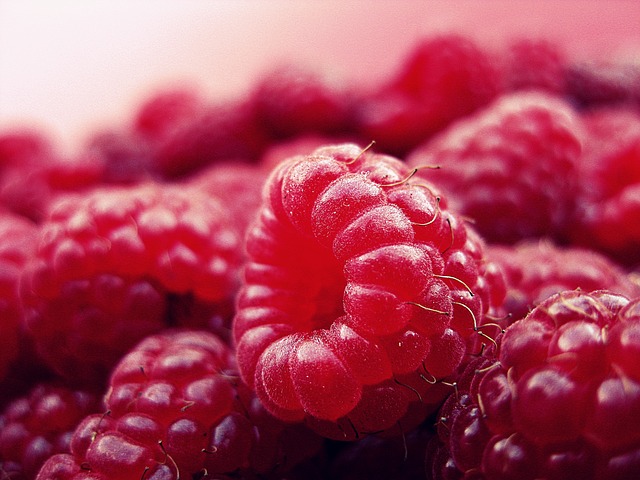
Like the strawberry, a raspberry is not a true berry. Oddly enough, as delicious as raspberries are, it is possible that the plant was originally cultivated for its leaves, which have historically been used for medicinal purposes. You can get herbal teas made from raspberry leaves today. The two most widely known species of the fruit are the red and black varieties, but you will also see purple and yellow varieties, all of which are yummy!
Humans have been eating raspberries since the Paleolithic era, according to archeological findings. We’ve certainly known of them since ancient Greece. Greek myths tell us that the berries were once white, until Ida, nursemaid to the great god Zeus, pricked her finger as she was picking one, and her blood colored them red. The scientific name for red raspberries is Rubus idaeus, and literally translates to “bramble bush of Ida”, named for both the nursemaid and the mountain in Crete where they were grown.
The Blueberry
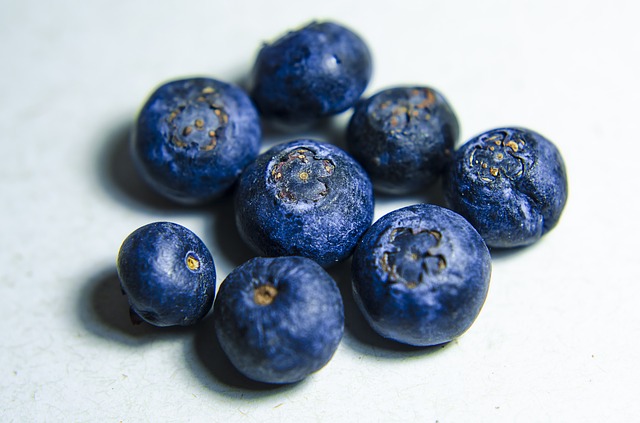
Oh, hey – a real berry! Blueberries grow on bushes and shrubs and are native to eastern and north central United States, but the fruit has now been introduced to many parts of the world. 90% of the world’s blueberries come from the United States. You’ll find similar looking berries, such as huckleberries, throughout most of the world, and they may be mistakenly identified as blueberries, but look for the distinctive greenish hued flesh when they are cut open.
The name is English, and perfectly describes the fruit, but is probably a derivation from the Middle English hurtilbery, or whortleberry. Remember, though, that Native Americans were cultivating blueberries long before the English settlers arrived. The Ojibwa name for the blueberry is miinagaawanzh.
The Blackberry
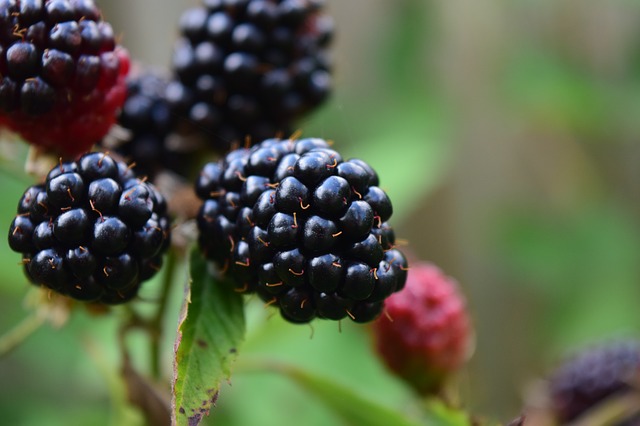
Let’s start with this: Although a blackberry, like the raspberry and strawberry, isn’t technically a berry, it is also most certainly not a black raspberry. They are two distinctly different fruits, and there’s a very interesting way to tell them apart. When you pick a raspberry the stem (known as the torus) stays with the bush, leaving the raspberry with an indentation in its center. When picking a blackberry, the torus stays with the fruit. That blackberry torus, so thorny in appearance, adds to the mystique of the fruit.
The word blackberry comes to us from the Old English bremelberie, or bramble berry, later written more descriptively as blaceberie, combining the Old English words for black and berry. The bramble thicket of the blackberry is said to be the source of Christ’s crown of thorns, and the berries bear the color of his blood.
Want a great treat? Combine 2 cups each of hulled strawberries, pitted cherries, and whole blackberries with 1 cup each of blueberries and raspberries in a large salad bowl. Stir together 2 tablespoons of lemon juice and 1 tablespoon of honey or agave nectar, then pour over the berry mixture. Add in ¼ cup each of chopped mint and chopped basil, then toss it all until the salad is thoroughly mixed.
Enjoy!

Build vocabulary, practice pronunciation, and more with Transparent Language Online. Available anytime, anywhere, on any device.




Comments:
Shalini:
This article is so delicious , so it’s delicacies. This article itself refreshes my mind, this summer you really need the fruits described beautifully in the piece.